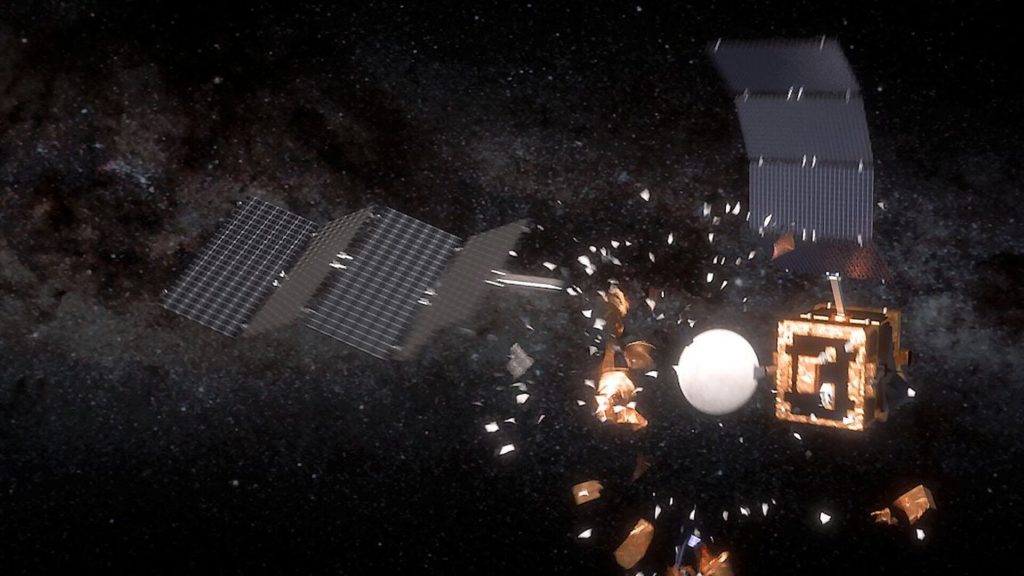
Connecting the Dots | Improving satellite collision predictions for efficient space (Image Credit: Space News)
Helping operators steer satellites away from potential collisions in increasingly packed orbits is a key driver for improving space traffic management, but also important is knowing when fuel draining detours are not needed.
Current monitoring and tracking systems cannot pinpoint the exact location and trajectory of the vast amount of objects in near-Earth orbit.
They instead rely on probabilities that feed into the conjunction alerts sent to operators, which then take action if the risk of a collision is high enough for them.
The frequency of collision avoidance maneuvers that satellites in low Earth orbit (LEO) make depends on their size, how populated the specific altitude is, how accurately the objects are currently tracked and the operator’s risk threshold.
“Depending on these factors for a given operator, they could perform anywhere from only a few [collision avoidance] maneuvers per year, all the way to multiple maneuvers per week, per satellite,” said Darren McKnight, a senior technical fellow at space situational awareness (SSA) provider LeoLabs.
According to Stefan Frey, CEO and co-founder of German startup Vyoma — which plans to use satellites to improve SSA measurements — LEO operators today perform an average of two collision avoidance maneuvers per satellite every year.
And if a decision is taken to move a satellite based on a 0.01% chance of collision, he says, “you could argue that in 9,999 out of 10,000 cases, the maneuver was actually not needed.”
Analysts project tens of thousands of satellites will be deployed in LEO over the next decade. Vyoma, LeoLabs and others seeking to improve SSA’s accuracy, reliability and coverage say the proliferation of LEO satellites will increase the number of close approaches.
Recent debris-causing events also aren’t helping. During the first four months of 2022, debris from November’s Russian antisatellite weapon test “caused a roughly 50% increase in statistical collision risk” with satellites between 370-570 kilometers, according to McKnight.
LeoLabs is expanding its network of SSA ground radars to track LEO objects more accurately and frequently, which McKnight said will improve the accuracy of computed collision risk and reduce unnecessary avoidance maneuvers.
“As the space environment scales rapidly, so too must the SSA capabilities needed to support that growth,” McKnight said. Legacy government systems are unequipped to handle this growth in the long term, he said.
Robert Sproles, senior director of constellation planning and operations at Spire, which operates more than 100 smallsats in LEO, said the company receives an average 12 conjunction data messages every day from the Space Force’s 18th Space Defense Squadron surveillance unit.
Sproles did not say how often Spire maneuvers satellites in response to collision threats, but said its risk classification system has three categories:
• GREEN for when the probability is less than 0.1% and no action is needed.
• YELLOW when it is between 0.1-1% and needs a closer look to see which direction the alerts are trending. If applicable, Spire reaches out to other operators to start coordination procedures, but no maneuver is scheduled yet.
• RED when the probability of a collision is greater than 1% and requires action, which starts with coordination with the other operator and may or may not result in one or both of them taking action.
Sproles said making collision probabilities more accurate would enable operators to save fuel, or even reduce the size of a satellite’s propulsive capabilities from the outset to lower overall system costs.
This article originally appeared in the June 2022 issue of SpaceNews magazine.








